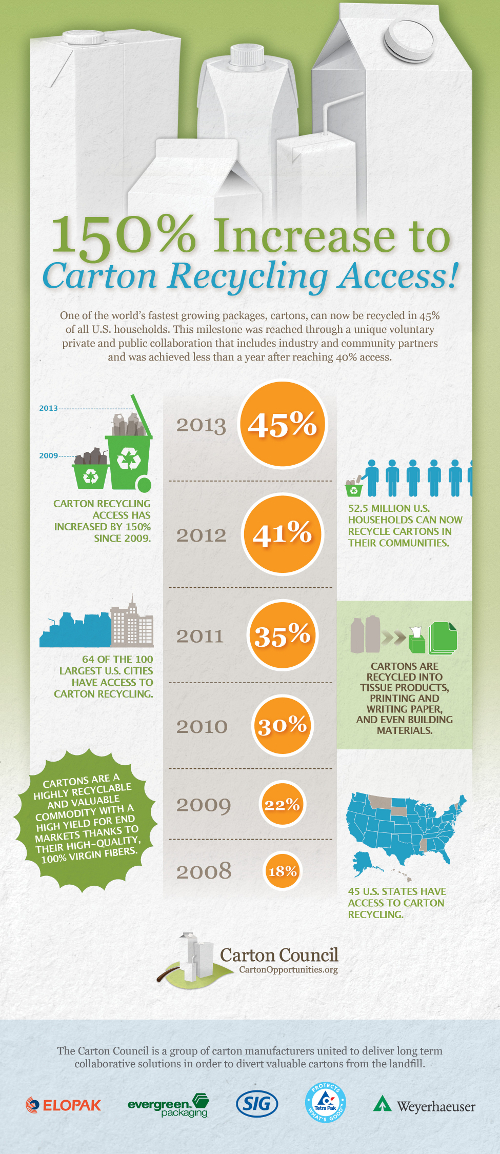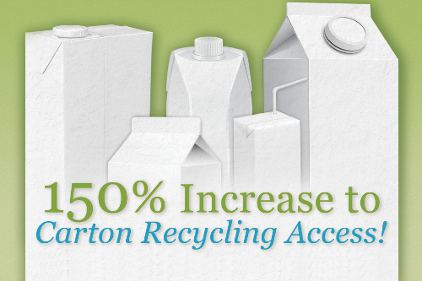Forty-five percent of U.S. households can now recycle cartons through their curbside recycling programs and other recycling venues, thanks to a unique voluntary private and public collaboration that includes industry, recycling facilities and local governments.
The Carton Council of North America (cartonopportunities.org), a group of carton manufacturers united to deliver long-term collaborative solutions in order to divert valuable cartons from the landfill, announced today that the new milestone had been reached. Forty-five percent access is an increase of 150% from 2009, when the Carton Council was formed and carton recycling access stood at just 18%.
|
Largest U.S. Cities to Have Access to Carton Recycling |
|
1. New York |
|
2. Los Angeles |
|
3. Philadelphia |
|
4. San Antonio |
|
5. San Diego |
In 2009, 21 million U.S. households had access to carton recycling in 26 states. Now, 52.5 million households in 45 states can recycle cartons, including residents in New York, Dallas, Philadelphia, Milwaukee, Denver, San Diego, Louisville, Arlington and Los Angeles.
“More and more communities are coming on board and establishing access for their residents to recycle cartons,” says Jason Pelz, vice president, environment, Tetra Pak North America, and vice president of recycling projects for the Carton Council of North America. “Sixty-four of the 100 largest U.S. cities are part of the carton recycling movement and provide access to carton recycling to their residents. The progress in increasing access across the U.S. is indicative of the recyclability of cartons as well as their value through strong end markets.”
The newest recycling facilities to come on board and accept cartons are Gold Coast in California and Republic Services in Lorain, Ohio. The addition of these two facilities and the communities they serve helped in reaching the 45% milestone.
“We’re delighted to accept cartons into our recycling program,” says Eric VanHouten, Elyria business unit general manager for Republic Services. “The addition of cartons makes recycling even easier for our residents and provides another opportunity to remind them of the importance of recycling.”
“Industry and community support is only continuing to grow across the country, and we are channeling that support into our ongoing efforts of adding access and infrastructure for recycling cartons,” says Pelz. “We are encouraged by this 45% milestone and are even more motivated to move full speed ahead toward achieving 50% and eventually 60% access.”
Made primarily from a 100% renewable resource, lightweight and compact in design and with a low carbon footprint, cartons have proven to be a sustainable packaging solution that is growing in use for a variety of liquid and food products. Recycling facility managers and community program officials are finding it necessary to integrate them into the recycling supply chain, where they are a proven valuable material thanks to their high-quality, and virgin, long fiber. In addition to the fiber, cartons have thin layers of polyethylene (plastic). Shelf stable cartons also have a thin layer of aluminum to enable the product to be stored safely without refrigeration. These materials can also be recovered and recycled.


